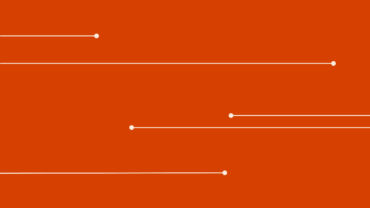Are you spinning your wheels on tax data collection?
Leveraging a powerful workflow engine can deliver the intelligent tax automation, control improvement, and greater visibility tax teams need to make more strategic decisions, mitigate risk, and successfully orchestrate the entire direct tax process.
The current state of tax data collection
Unfortunately, too many professionals are wasting their time during the busy tax season, spending as much as 80 percent of their work hours collecting and entering information, verifying its accuracy, and consolidating tax documents.
Much of the problem lies within the fact that source data often resides in disparate systems and formats. That data must not only be collected, but verified for accuracy, and manipulated for use. That’s assuming that none of the necessary data is missing.
Spreadsheets and manual processes are not the answer for tax data collection and analyzation. This is time-consuming, highly inefficient, and leads to greater risk for errors. Tax teams are already under pressure to manage increased workloads and staffing constraints, while keeping pace with the complex regulatory environment. This also makes it more difficult to demonstrate value and make informed strategic decisions.
“All of this culminates in the form of redundant reviews … throughout the process instead of standardizing everything to a singular review process that is materiality based. They are forced to almost review, at each stage of the process, the prior stage’s output because of all of this manual intervention and disparate data sources along the way,” said Corey Greene, Senior Outbound Product Marketing Manager, Tax and Accounting Professionals for Thomson Reuters.
Continued Greene, “In addition to that … there’s a need for a greater level of control and visibility of the entire tax filing process both for risk reduction purposes but also business intelligence purposes. Really reducing that issue of limited visibility.”
Ways to overcome tax data collection challenges
Overcoming tax data challenges and driving greater value requires a suite of digital tax workflow tools to drive the direct tax management process. Let’s take a closer look.
Automate and standardize data flow
With the right tax data management software, tax professionals can automate and standardize the flow of data. This can significantly reduce corporate tax data collection and preparation time, and boost accuracy. When evaluating the right data management solution, firms should consider the following features:
- The ability to standardize existing tax packages and work papers with controls, validation, year-over-year data recall, and automated rollovers to reduce preparation time and flow data directly from the source to your tax applications.
- Extended capabilities of Excel for familiar navigation.
- Data stored in a central repository, allowing for easy review, consolidation, and scrubbing.
- Easily distributes and monitors data collection requests.
- Automated and ad-hoc reminders to ensure timely completion.
- Secure access for all internal and external sources of data in your process.
- Simplifies data loading and reviewing.
- Data mapped and transferred across the entire corporate tax platform.
- API-enabled so you can manage the entire process using the tools of your choice, as well as create custom dashboards with regularly updated information.
Control data from one central location
As noted earlier, too much time is spent searching for accurate tax data across multiple applications and on manual manipulation before it can be used for tax planning, provisioning, and compliance. A centralized tax data repository for corporate tax data helps free up the valuable time needed for tax data analytics and value-add work.
The Thomson Reuters ONESOURCE Data Hub, for instance, delivers the following benefits:
- With an intelligent ingestion and classification engine, data can automatically flow into the same system, no matter the size or the format of the original source material.
- Automated, no-touch tax data collection means less time spent trying to marry insights from multiple systems, without the risk of manual error in the input process.
- Strengthen, classify, and enrich data to provide further value.
- Leverage business data however and wherever it is needed, all from one central location.
- Visualize data and use it for planning, strategizing, and reconciling with other systems.
Referring to the ONESOURCE Data Hub, Greene said, “[It is] taking all of the critical data as each stage of the workflow is completed and storing that in a centralized location — ready to be viewed by whoever needs it, ready to be analyzed, or repurposed by whoever needs it — across all of the applications involved in that workflow.”
How to optimize tax data collection
Stop spinning your wheels and start driving greater tax value with a powerful workflow engine that drives automation, improves controls, and delivers the visibility needed to make strategic decisions.
Turn to Thomson Reuters ONESOURCE, which offers an automated solution to your tax data collection needs. Quickly store and access up-to-date information, then take advantage of its reusability across multiple internal systems and external applications. Start now and see what a difference an automated solution can make.








